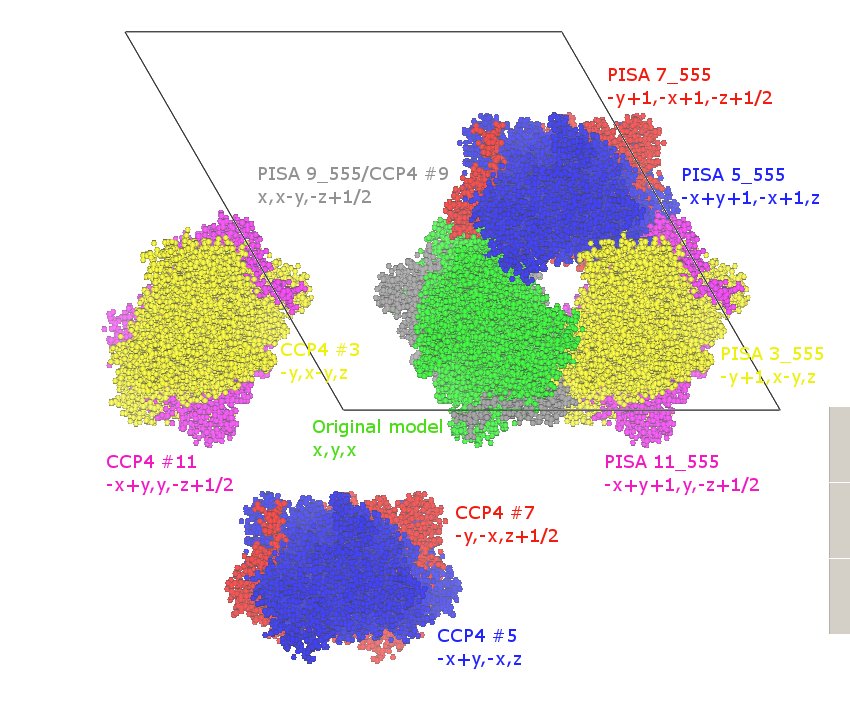Look at the 3GCB example (default in PISA) - go to the details of the first assembly that PISA finds. This table shows the symmetry operators that PISA gives, compared with the "equivalent" CCP4 operators that have the same id number.
| Sym.id | PISA Operator | CCP4 "equivalent" | Comments |
|---|---|---|---|
| 1_* | x,y,z | x,y,z | |
| 3_* | -y+1,x-y,z | -y,x-y,z | PISA adds +1*a translation |
| 5_* | -x+y+1,-x+1,z | -x+y,-x,z | PISA adds +1*a and +1*b |
| 7_* | -y+1,-x+1,-z+1/2 | -y,-x,-z+1/2 | PISA adds +1*a and +1*b |
| 9_* | x,x-y,-z+1/2 | x,x-y,-z+1/2 | |
| 11_* | -x+y+1,y,-z+1/2 | -x+y,y,-z+1/2 | PISA adds +1*a |
The outcomes of applying the various operators (PISA and CCP4) is illustrated in the figure below (the ab plane viewed along the c axis). Where the CCP4 operator would have placed the molecule in a different unit cell, PISA has redefined it to ensure that the molecule does occupy the original cell.

Note that PISA sym.ids don't describe the operator to be applied, instead they identify the location of the transformed molecule e.g. 3_645 means "after applying symmetry operation 3 the model is in the cell translated by +1 along a and -1 along b axes".
This seems to cause confusion compared with similar notation used for describing the operators themselves, e.g. 3_645 means "apply symmetry operation 3 followed by translations of +1 along a and -1 along b axes".
Why do some symmetry operators have multiple sym.id translation codes?
Note that the figure above only shows transformations of the main chain, and that parts of the transformed (and original) molecules lie outside of the original unit cell. However for some of the ligands (which are very much smaller) they may lie entirely outside of the original unit cell when transformed.
An example is shown in the figure below (the ac plane viewed along the b axis). In this example, the "x,x-y,-z+1/2" operator (number 9) acting on the main chain places it in the original cell, resulting in a PISA sym.id of 9_555. But the same operator acting on component [GOL]-:1001 places it just outside the original unit cell, resulting in a different sym.id of 9_554.

Appendix: CCP4 operators for P 63 2 2
CCP4 operators for "P 63 2 2" (generated using CCP4 6.0 symmetry library):
Sym.id Operator 1 x,y,z 2 x-y,x,z+1/2 3 -y,x-y,z 4 -x,-y,z+1/2 5 -x+y,-x,z 6 y,-x+y,z+1/2 7 -y,-x,-z+1/2 8 x-y,-y,-z 9 x,x-y,-z+1/2 10 y,x,-z 11 -x+y,y,-z+1/2 12 -x,-x+y,-z
August 2006